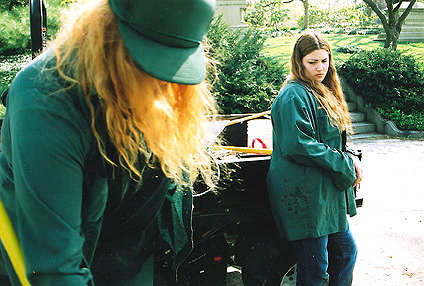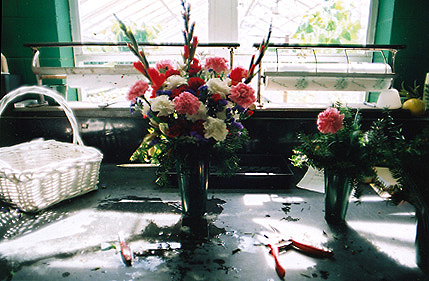Mary believes that working with plants has a therapeutic effect, one that draws in people who are suffering, whether they have loved ones buried at the cemetery or not. This is the unexpected and emotionally difficult side of working in the greenhouse. Mary's work includes maintaining many of the perpetual care plots, ones where there is a contract agreement for a certain type of decoration to be placed on the grave at particular times every year. Sometimes, fulfilling a 100-year old request by a husband to have a corsage of flowers placed on his wife's grave each year on her birthday strikes Mary as a supremely romantic gesture, but at other times it saddens her.
Every April 11, Mary assembles a vase of flowers for the grave of a young teenage girl on the anniversary of her death. Pulling the flowers out of the refrigerated case, cutting the stems, and arranging them in the vase she talks about how this order always has a strong effect on her. Her own daughter Pauline, now 14, was born on the same day as the deceased girl. Mary takes this coincidence of dates as a sharp reminder to be thankful for all that she has in life that she takes for granted.



[The
finished flower arrangement that Mary will take to the grave site.]
[Pauline,
Mary's daughter, has been coming to the greenhouse and the cemetery with Mary
since she was a child. On this holiday from school she helped prepare flower
beds and planted pansies.]
[Mary
assembles a vase of flowers for the grave of a young teenage girl.]